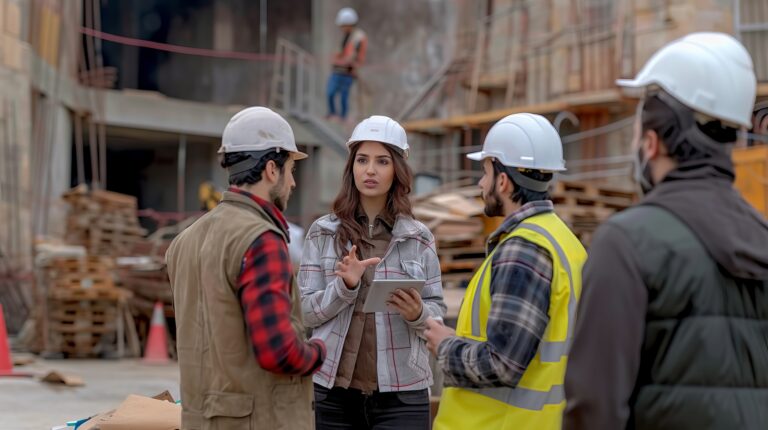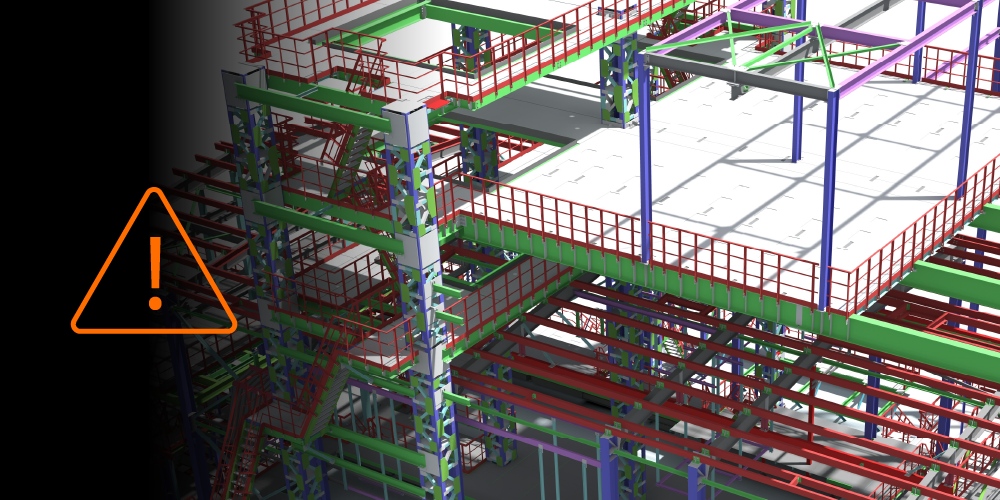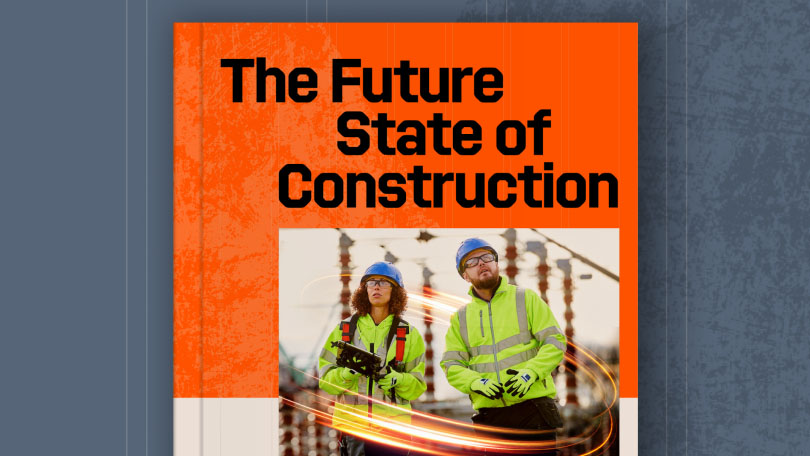Related Articles
— 7 min read
It’s Not a People Problem:What’s Driving Construction’s Workforce Crisis — and How We Can Start to Turn It Around

Last Updated Sep 10, 2025

Annabel Davis
Before joining the world of construction technology, Annabel worked as a Project Engineer across major infrastructure projects in Australia, New Zealand, and the UK. Her experience on site—often drive-in-drive-out or fly-in-fly-out—spanned large-scale rail, road, and marine works. Annabel holds a BEng (Civil, Structural) and BCom (Economics) from USYD and brings her practical, hands-on knowledge to her role at Procore, where she has been since 2021. This move was driven by a deep appreciation for the construction community and a desire to leverage engineering expertise in a less transient role, while remaining connected to the industry.
Last Updated Sep 10, 2025

In search of solutions to construction’s workforce crisis, Henny CEO Ben Turner recently made a convincing case for getting kids into building earlier – to spark curiosity and support lifelong learning through school, TAFE and beyond. Growing up around and on the tools can drive participation and foster talent, as Ben’s career shows.
But my path into (and ultimately out of) construction couldn’t have been more different. That’s why I see our workforce problems and potential solutions from another angle. I’m focused on those who don’t get early exposure and never quite fit the mould. People who don’t enter the industry because the door is wide open, but because they find it just slightly ajar.
People like me.
With women making up just 13% of the global construction workforce, I’m exactly the kind of person the industry says it needs. Technically capable, gritty, and at home onsite, I spent nearly a decade delivering infrastructure projects across Australia and the UK. I loved the pace, the physicality, the problem-solving. I was good at it.
And yet, I walked away.
Here, I explore why – and what that tells us about skills shortages, retention, and the broader shifts needed to make construction work for everyone.
Table of contents
Getting in and Staying in: Fitting the Mould vs Breaking It
I grew up with two sisters and played with Barbies. No toolkits, no curiosity about machine mechanics. I was great at maths, which led me to uni and vague ideas about where an engineering and commerce degree might take me.
As luck would have it, my housemate’s sister was a power woman in construction. Like Ben, she’d grown up in the industry. She saw something in me – analytical thinking, energy, capability – and nudged me toward site work over design, knowing I’d prefer getting my hands dirty.
That was all it took: someone opening a door I hadn’t known was there. It highlights a simple truth: what you can see, you believe you can be. Can you see different genders, ages, cultures on site? In leadership? For most women, the chances are still too low.
I’ve had great mentors, but none were women in senior construction roles. That’s changing. I’m mentoring now. I sometimes question if it’s my place, but I know we all play a role in building more inclusive workplaces.
I’ve seen people face challenges that have little to do with capability — assumptions, tone, and the extra effort needed to be taken seriously. Appearance and identity shape experience in ways that are hard to call out but impossible to ignore.
Mentoring often goes beyond advice. It means helping someone navigate unspoken rules or pressure to fit in. But how do you guide someone through a system not built for them? The burden shouldn't fall to the individual, the industry needs to change.
I’ve also seen people leave site roles not due to lack of ability, but because the environment made it too hard to stay. They found other paths where they could contribute without being on guard. Talent wasn’t the issue , culture was.
People who don’t fit the “good bloke" mould don’t have it easy. These are signs of a closed culture; one that keeps pushing people out while we talk about the need to build and diversify the workforce.
So what’s being done to change that?
Shifting Culture and Representation: Are Mandates the Answer?
We’ve seen mixed results with mandates and growing resistance to diversity and inclusion policies. Sometimes quotas shift thinking. But if it’s not genuine or supported, it can cause other problems.
I’ve seen this on site. You hit the numbers: 50% really talented female engineers, and 50% who aren’t quite there. Because it’s mandated, people focus on any woman who underperforms: “She’s only here because she’s a woman.” Meanwhile, no one questions the mediocre male hire.
I’ve never had an issue giving the edge to a woman when candidates are equally strong. That builds representation and promotes talent. But elevating someone just to tick a box? That doesn’t help — and breeds resentment.
Efforts to improve diversity in construction
Governments are taking steps to address construction’s diversity gap—but results are mixed.
- Indigenous employment rules have applied to Commonwealth contracts since 2016, yet a recent audit found $70 billion in exemptions, raising questions about effectiveness.
- The Commonwealth Workplace Gender Equality Agency (WGEA) now requires companies with 100+ staff to set and report on gender targets.
- Victoria’s Building Equality Policy, WA’s Gender Equality Procurement Policy and the ACT’s Women in Construction Procurement Policy are in place or being developed to boost female participation on government projects.
With women making up just 17% of the workforce, holding 12% of top-paying roles, and facing a 31.8% gender pay gap—the worst of any industry—it’s clear there’s still a long way to go.
Why I Left — and What Would Draw Me Back
We talk about ‘women in construction’ as if we’re a homogenous group—or would be if there were more of us. But each experience is different. I didn’t leave because I was the odd one out, or due to discrimination or pay, though I know others do.
I loved the work. Roads, rail, greenfield and brownfield builds. But civil construction projects are all-consuming. You move from project to project, state to state. And men don’t typically follow women for work. So you either find a partner in the same profession, or you choose between your career and everything else.
When I moved back to Sydney, I looked at roles on projects like the light rail. But after years on greenfield builds, it felt like digging with a fork. The pace, the paperwork, the endless artefacts under the surface. Six-day weeks. Long hours. The unspoken rule: if you weren’t on site, you weren’t working.
I left because the industry wasn’t built for people like me, at least not without giving up what professionals in other sectors enjoy: work-life balance.
There used to be a belief in construction: if you're still in at 30, you're in it for life. That’s not true anymore. I’m seeing people in their 40s walk away, taking their skills into tech, startups, consulting. Because they’ve realised “building” can also mean systems, products, businesses. You start to ask: Why stay, if the culture won't change?
That’s a huge loss of talent and leadership at a time when the industry needs them most.
Autonomy and Transparency: Essential Ingredients for a Future-Ready Workforce
I still don’t introduce myself as someone who works in tech. I say I’m a retired civil engineer. My partner laughs and asks when I’ll let it go. I always say: never.
Because I haven’t let go. I just stepped away, hoping the industry might finally shift. I still believe construction can evolve, if we’re willing to do the hard work.
For me, it comes down to this: Construction doesn’t have a people problem. It has a supervision problem.
Supervision is essential for safety and quality, but too often it’s rooted in control. That mindset blocks autonomy, drives burnout, and pushes people out, especially women.
We’re not failing to attract or retain people like me because we can’t do the job. We’re failing because we haven’t built an industry that accommodates modern life.
The good news is progress is happening. Senior engineers who used to be in the office or onsite every day are starting to work hybrid. They’re learning to trust themselves and their teams. That’s new for construction. And it’s a start. Trust is the foundation, along with three key ingredients:
Autonomy: When people feel trusted to manage their time and see what’s ahead, they feel in control. That builds engagement and productivity.
Transparency: It’s about people feeling safe to be themselves, saying “this is how I work” or “I’m struggling” without stigma. That openness supports flexibility, mental health, and wellbeing, areas construction has often ignored.
Authenticity: It sounds clichéd, but the best thing you can be on site is yourself. Enabling people to work to their strengths and be themselves opens real possibilities for diversity and culture change.
What are the chances?
The Future State of Construction report confirms the workforce crisis is the number one global priority. To solve it, the entrenched, conventional approach to managing teams must shift. That means structural and cultural change, with openness to different leadership styles, lives, and work-life balance.
When that shift happens, I’ll be pushing on that door to get back in for good. And I won’t be the only one.
Categories:
Written by

Annabel Davis
Before joining the world of construction technology, Annabel worked as a Project Engineer across major infrastructure projects in Australia, New Zealand, and the UK. Her experience on site—often drive-in-drive-out or fly-in-fly-out—spanned large-scale rail, road, and marine works. Annabel holds a BEng (Civil, Structural) and BCom (Economics) from USYD and brings her practical, hands-on knowledge to her role at Procore, where she has been since 2021. This move was driven by a deep appreciation for the construction community and a desire to leverage engineering expertise in a less transient role, while remaining connected to the industry.
View profileExplore more helpful resources

Managing Direct Costs in Construction: How Visibility Drives Profitability
Direct costs define the financial reality of every construction project. They cover the labour, materials, and equipment that drive delivery and determine profitability. But even the best-planned budgets can shift...

BIM Clash Detection: Reducing Rework, Delays, and Risk in Construction
Design clashes can be a significant hidden cost in construction, as each conflict between systems risks expensive rework, project delays, and reduced margins. BIM clash detection empowers teams to identify...

Next-Gen Job-Costing: Ready to Move? 5 Things to Consider Before You Get Started
In this three-part series, Quantity Surveyor turned Financial Solutions Specialist Clint Burgess uncovers the real-world gains for people, processes, and profits when businesses move from legacy to next-generation Enterprise Resource...

From Workarounds to Workflow: Solving Construction’s Legacy Job-Costing System Challenges with Next-Gen Tools
In this three-part series, Quantity Surveyor turned Financial Solutions Specialist Clint Burgess uncovers the real-world gains for people, processes, and profits when businesses move from legacy to next-generation Enterprise Resource...
